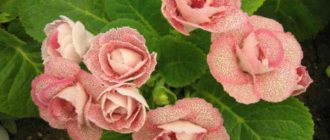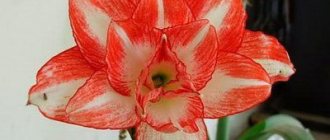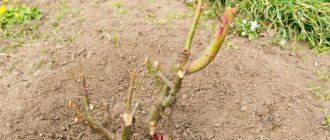Category: For flowers and indoor plants Reading time: 8 min · Views: 2,872
Violet is the most common house flower. Beautiful multi-colored violets (Saintpaulias) can be found on almost every windowsill, and not only in private homes. However, the flower does not always please with its blossoming inflorescences, since active flowering requires minerals and vitamins. Let's consider the topic: feeding violets at home. How should you fertilize the soil in flowerpots so that the flowers are pleasing to the eye throughout the growing season?
Black tea
Experienced gardeners use black tea as a fertilizer. You can take both the grounds and an aqueous solution.
Tea contains many elements that violets need for active life:
- potassium;
- calcium;
- magnesium;
- iron;
- trace elements (boron, manganese, sulfur, aluminum).
It is better to drop the dried grounds into a flower pot. Over time, it will decompose, saturating the soil with mineral and organic fertilizers. Thus, the effect of the fertilizer is prolonged.
You can water the violet with an aqueous solution no more than once every two weeks. Under no circumstances should you take tea with flavorings.
Mineral fertilizers
To create fertile soil, simple and complex mineral compositions are used. The forms for use are quite convenient; they can be tablets, sticks, or liquid.
If the drug is available in liquid form, you should read the instructions before use. Observing the dosage requirements, fertilizing is applied either under the root system or along the leaf.
Sticks and tablets are easy to apply. They are placed in the soil, where they decompose due to watering.
Specially developed, effective fertilizers for Saintpaulia, easy to use:
- Etisso;
- Good power;
- Master;
- BonaForte;
- Fusco;
- Peters.
Coffee grounds
Coffee can be used as fertilizer. If dried coffee grounds are mixed with violet soil, its acidity and breathability will increase.
In addition, the plant will receive from the grounds such elements as it needs for growth and flowering, such as:
- nitrogen;
- calcium;
- potassium;
- phosphorus;
- copper;
- iron.
Dry cake can also be used as drainage or liquid fertilizer by preparing a solution of 1 teaspoon of grounds and 1 liter of water. Liquid fertilizing is recommended to be used no more than once every 2 weeks.
Work calendar
Fertilizing violets at home is carried out in accordance with certain periods of fertilization. The starting point for fertilizing is the beginning of the vigorous growing season and the formation of buds of the home beauty. From this moment on, the flower needs constant care and attention. The growing season lasts from spring to autumn; in winter, the flower needs rest.
Some gardeners force their violets to bloom all year round, but intensive work quickly wears out the plant.
As soon as the violet begins to bloom new leaves and form buds, it is necessary to add nitrogen complexes. Nitrogen stimulates the growth of green mass and activates all life processes. But during flowering, nitrogen is not needed for feeding: it interferes with flowering. Nitrogen only promotes greening of the plant, but not flowering.
As soon as the first buds appear on Saintpaulia, the violet needs feeding for flowering. These are potassium-phosphorus complexes that will ensure the splendor of flowers.
Saintpaulia needs regular feeding, but not more than twice a month. The working solution is poured into a tray or carefully irrigated with it into the soil mixture, being careful not to get on the leaves.
Prohibition on fertilizing:
- within a month after transplanting to another pot (transshipment is not taken into account);
- within a month after changing premises (bought at a flower shop and brought home);
- the room temperature is not normal;
- if the earthen ball is too dry;
- if the violet is sick or has been attacked by harmful insects.
After transplantation, pelargonium receives the necessary nutrition from the new soil mixture, so additional fertilizing will be unnecessary and excessive. If you bought a flower in a store and brought it into your home, it must acclimatize. During the period of violets getting used to new conditions of existence, fertilizing can be harmful.
Yeast
Yeast is very useful for violets, especially those weakened in winter.
Yeast dressing is prepared according to the following recipe: 1 tablespoon of dry yeast is diluted in 10 liters of warm water and 30 grams of sugar is added. The resulting solution must be infused, after which it is diluted with infused water in a ratio of 1/5. The prepared violet mixture can be watered once every 2 weeks.
Thanks to this feeding, the plant is supplied with nitrogen and the result is visible within a week:
- the plant becomes healthier;
- the root system becomes stronger;
- the green mass is growing.
Features of caring for violets
For the rapid flowering of this home beauty, appropriate conditions are required:
- illumination minimum 12 hours;
- moderate air humidity (minimum 50%);
- timely watering;
- balanced soil mixture composition;
- constant air temperature 22-24C.
In addition to the listed conditions, Saintpaulia requires nutrients in the form of balanced organo-mineral fertilizers:
- nitrogen compounds are necessary for the active development and growth of green mass;
- phosphorus and potassium are necessary for the root system and bud formation.
Saintpaulia also needs other mineral components, but the ones mentioned above are the basis for the life of any plant.
All types of fertilizers for Saintpaulia can be divided into 3 groups:
- organic;
- inorganic simple;
- inorganic compounds.
Everything is clear with organics: these are ash, plant infusions, and other dietary supplements of organic origin. Inorganic simple fertilizers are those preparations that contain only one substance. These include ammophoska and nitroammophoska (contain nitrogenous compounds), potassium salt and others.
Complex nutrition for violets contains a balanced composition of various minerals and vitamins, which is designed to achieve a specific goal: to enhance the growth of green mass, enhance flowering, etc.
Signs of micronutrient deficiency:
- the leaves have become weak and thin, stretching upward;
- the violet stopped blooming;
- the plant has stopped growing or is developing very slowly;
- leaves often fall off and turn yellow;
- the violet looks “sick”.
It is advisable not to bring the plant to this state, feed it and give it vitamins on time.
Banana peels
Banana peel is deservedly considered the best natural fertilizer for violets. It contains potassium, phosphorus, nitrogen and magnesium. Thanks to these elements, the flower grows better, the foliage becomes greener, and the plant’s immunity increases. This fertilizer does not contain chemicals, so the flower will not get burns to the roots and foliage.
It’s very simple to prepare banana peel fertilizer:
- the skins of two bananas are dried in the oven and then crushed;
- 1 liter of water is mixed with the resulting banana powder, 1 tablespoon of eggshell powder and 20 grams of magnesium sulfate are added;
- everything is thoroughly mixed and infused for about 3 hours.
The resulting solution can be watered or sprayed on the violet.
How to understand that a violet needs feeding
The absence or deficiency of necessary microelements can be judged by the appearance of the plant. As for violets, the need for feeding is expressed in:
- suspension of development (new leaves and peduncles do not grow);
- decrease in stem turgor;
- loss of elasticity of petioles and leaf blades;
- absence or insufficient amount of flowering;
- bud defects.
Blooming violet
Need to know ! The same signs can appear if the plant is not maintained correctly. This may include damage to the flower by pests, violation of temperature and watering conditions.
Eggshell
Shells can be used as fertilizer in different ways:
- water the violets with a solution infused on the shell;
- use as drainage;
- add shell powder directly to the substrate.
Before use, the shells must be washed well and dried thoroughly. After this, grind and store either in a glass jar with a lid or in a paper bag.
Eggshells contain a lot of calcium, which the plant needs to grow. In addition, calcium regulates soil acidity.
Violet is a very delicate flower. Without fertilizers you cannot get abundant flowering. Each gardener decides for himself whether to use chemicals or natural fertilizers prepared at home with his own hands. There are a lot of traditional methods, but we recommend using only those proven by experienced flower growers. And then your violet will delight you with beautiful and lush flowering for a very long time.
Root and foliar feeding
Flowering is ensured by various feedings. Root fertilizers involve applying fertilizers of the required concentration under the root of the plant or on a tray. If the product is intended for other varieties, then it must be diluted by half compared to the dose indicated on the package. It is also important to follow simple rules:
- For feeding, use only settled warm water.
- Miniature varieties must be watered with a solution that has 2 times less concentration than ordinary ones.
- It is more convenient to place most plants on a tray with a nutrient solution. They stand for half an hour, and then they are removed and placed in another tray on a layer of expanded clay to remove excess liquid.
These feedings are carried out with each watering, but the concentration of the product in this case is 2 times lower. In winter they should be reduced to a minimum. They cannot be performed when a transplant has just been performed.
Foliar feeding is called foliar feeding. When carrying them out, it should be taken into account that:
- It is better to carry them out on a cloudy day, otherwise burns or rotting are likely to occur. The concentration should be 2 times lower compared to root nutrition.
- The nutrient mixture should be sprayed from the underside of the leaf so that it gets there exactly.
To perform high-quality watering, it is necessary that the hole in the pot be large. Then the lack of moisture flows into the pan. It is important to ensure that the hole is not clogged and to clean it in a timely manner.
How long after planting does flowering occur?
It is difficult, perhaps even impossible, to say unequivocally after what time flowering will occur. Each variety of violet has its own time frame, from about 8 months to 1 year.
Although, even when planting one variety, the plant may begin to bloom for the first time at different times.
Some varieties bloom quite quickly, even early, and some will not bloom until they have grown sufficient leaf mass. There are varieties that take a very long time to develop. The first flowering of such violets may take even 1.5 years.
Some use growth stimulants and artificial additives to speed up the process. But in these cases, the plant most often still dies.
Peculiarities! With violets, everything is like with people - some are absolutely healthy, some are susceptible to illness, some grow quickly, and some take more time.
Which varieties bloom all year round?
Emerald Pink (LLG/P. Sorano)
Semi-miniature with light coral, sometimes pink flowers, outlined with a light green border. The small size of the flowers is more than compensated by their quantity. The variety is quite easy to care for and breed, so it is suitable even for beginners.
Anastasia (Sorano)
A variety of two-tone violets, which is absolutely simple, but the sky blue color gives lightness, fabulousness, and mystery. The flowers are semi-double, with corrugated edges. The foliage is medium green.
Why doesn't it bloom, reasons?
If the violet does not grow, as it seems to you, for quite a long time, then you do not need to immediately blame the sellers who sold the “low-quality” flower. In fact, there are many reasons for the flowering process to slow down or not occur at all. Sometimes this depends on the type of violet, and sometimes it is directly related to improper care.
Here's what to pay attention to:
Daylight and lighting
Most varieties require long, bright light - 10-12 hours.
If you place a pot of violet incorrectly in your apartment, you may not see it blooming.
The lack of light can be noticed by the leaves - they begin to literally reach for the light, become long and thin. The flower should be provided with good lighting, but protected from direct sunlight.
The soil
Too dense, heavy garden soil is not at all suitable for this crop. Such soil simply will not allow the roots to fully develop and, as a result, flowering will not occur. You can use universal soil - “for everyone”, or buy special soil specifically for violets.
Pot
If the new pot is too big for the violet, then it may not bloom.
Leaves will develop, but will not bloom.
This plant does not like space; small, even “cramped” pots are comfortable for them.
Watering
If you overdry or, conversely, over-moisten the soil, there will be no flowers either. It is also unacceptable to use too cold water or irregular watering.
Humidity
In a city apartment, the air humidity is usually about 30%, and the comfortable humidity for violets is 50%. This can also cause a refusal to bloom.
Pests
Violet is no exception and is also susceptible to diseases and pest attacks. Here you need to carefully examine the plant itself and the soil.
Top dressing
The crop needs weekly fertilizer supplements. But if you overdo it, the plant will begin to struggle with excess substances, and will not direct its “forces” to flowering.











